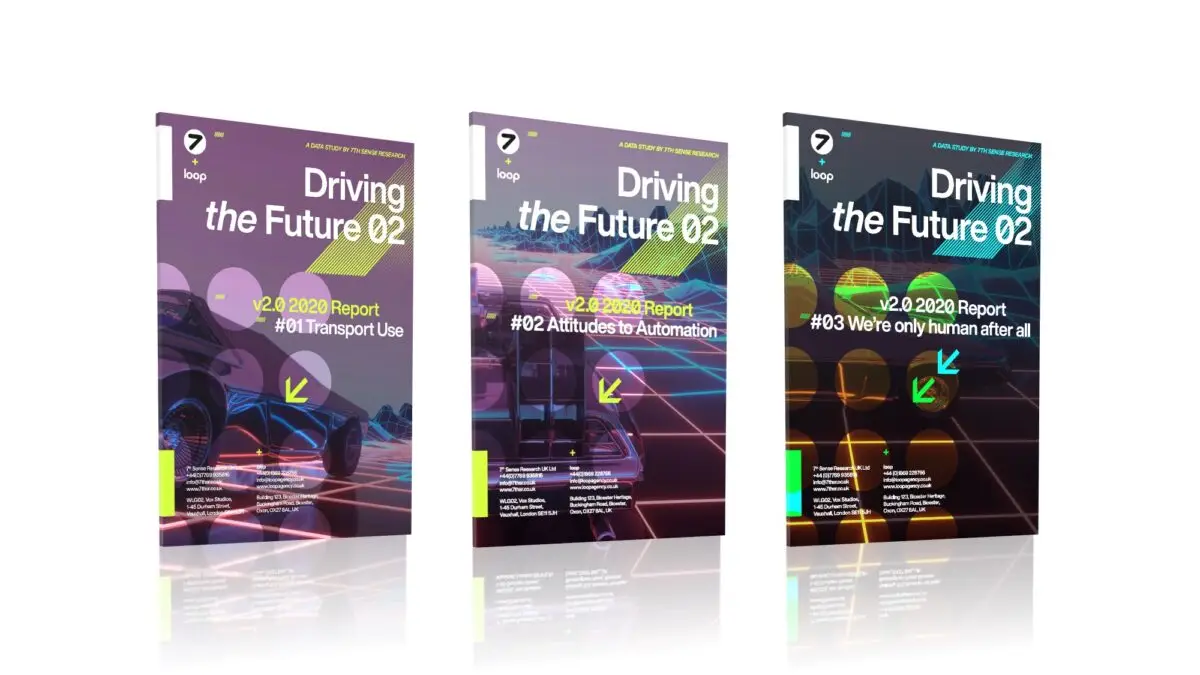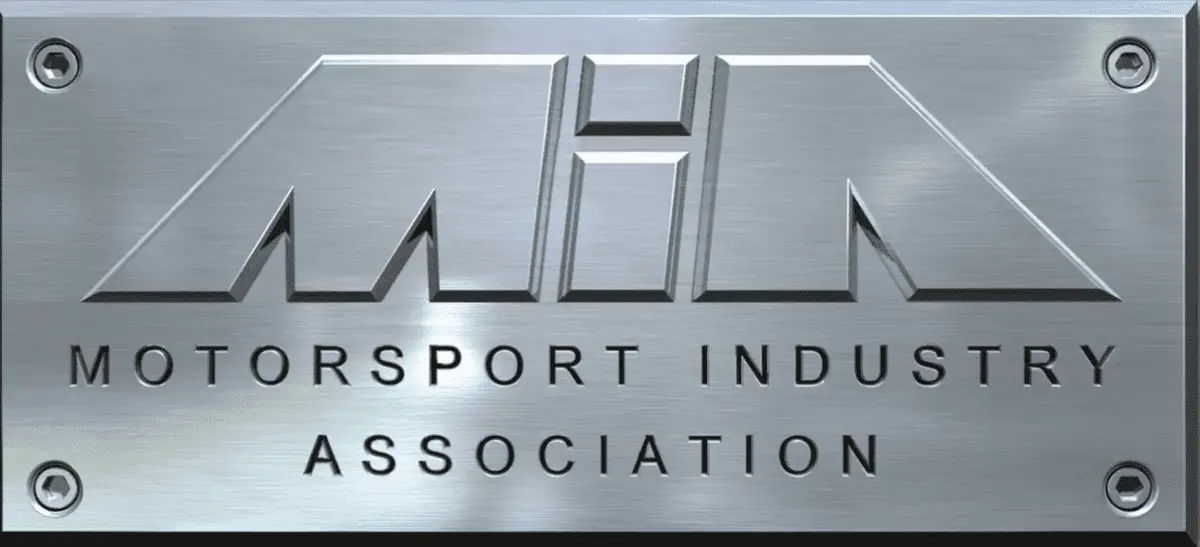In 2019 Driving the Future surveyed 3,000 UK transport users, and for the 2020 follow up the team at 7th Sense Research UK Ltd. wanted to see just how have things changed.


In 2019 Driving the Future surveyed 3,000 UK transport users, and for the 2020 follow up the team at 7th Sense Research UK Ltd. wanted to see just how have things changed.

Energy-efficient technologies and solutions are high on the agenda for all high-performance automotive businesses. The most exciting, confusing, and challenging business landscape for decades lies ahead but help is on hand.
On 24th March, the Motorsport Industry Association (MIA) will host their online Energy Efficient Motorsport Conference (EEMS). Knowledge from leaders of successful high-performance engineering and motorsport businesses will help attendees develop business plans for these fast-changing times.
They will hear well-informed views on future propulsion systems and energy-efficient technologies. Online for the first time, this well-respected conference attracts a wide audience from the global world of motorsport, high-performance engineering, and adjacent sectors.
Exceptional speakers who will discuss, debate, and share their knowledge and experience include:
Toto Wolff – Team Principal & CEO, Mercedes AMG Petronas F1 Team
Pat Symonds – CTO, Formula One
Andy Cowell – former MD of Mercedes-AMG High Performance Powertrains
Jost Capito – CEO, Williams F1 Racing
David Richards CBE – Chairman, Prodrive and Motorsport UK
Ulrich Baretzky – former Head of Audi Engine Technology

With monitoring and evaluation, there are many solutions and multiple sources, needing to bridge the gap between traditional media, social media and website analytics.
Since PR professionals are finding themselves with ever-expanding responsibilities, the most valuable commodity for them is time. So, monitoring and evaluation can often fall by the wayside, as it requires time and resources. However, it should be viewed as vital in managing responsibilities and time since it helps PRs make quicker and more informed decisions.
The research shows that 52% of global marcomms practitioners report on traditional media coverage. And of those, 49% look for a solution that encompasses all channels and data sources, 42% look for trend analysis on relevant themes and 41% also look for easily understood reporting (Talkwalker, 2020).
The key challenge
PR professionals have a wide range of responsibilities with limited time. Management of monitoring to draw relevant insight from evaluation and reports relating to PR activity therefore proves challenging. Talkwalker’s stats attest to this, seeing as 48% of marcomms still do not report on traditional coverage. But there are ways to effectively report on this if you know what metrics to review.
Is there a solution?
There’s no wonder that some PR professionals don’t report on their activity due to the sheer amount of data available. So, what are the appropriate metrics to choose from, how do you put them in context, and how can they inform future approaches?
Looking at an example from one of our clients will do best to illustrate. A client’s objective was to better understand brand affinity compared across each of their key market groups (e.g. Europe, EMEA, Americas). By working with loop, we have been able to monitor for and compare the sentiment (tone of the article towards the brand in question) and press release performance across these key market groups. We homed in on these two relevant metrics – sentiment and press release performance – and by integrating the two, we were able to track and provide the answer.
The sentiment is the kind of metric that is best looked at in context of other metrics, while press release performance is a metric that looks at how publications interacted with press releases on Newspress (in terms of Newspress engagement) and how much coverage they generated (in terms of reach). Although these two metrics can be seen as a proxy for other established concepts (and not without its charms), it’s the combination of those two that was able to help answer questions about the brand’s current momentum. Looking at the two metrics together, we can see a clearer narrative on whether the coverage for the brand is positive (vs. negative, ambivalent or neutral) and, more importantly, what kind of news attracted the most engagement and high-reaching positive media coverage.
This way, we were able to answer against the objective and determine brand affinity as well as draw insight as to what drives the brand affinity in each key market group. Drawing the insight from the data we collated through monitoring, we have been able to find which markets have the highest brand affinity – engaged and reported on brand’s news the most, and in the most positive manner.
More power
Working with the right evaluation team can advise you on the right metrics to monitor to build a stronger case for reporting successes. Our Monitoring and Insights team can work alongside you to introduce other ways of measuring, and creating better links between inputs (activities, campaigns, press releases) and PR outcomes.
Whether proving ROI to your C-suite or analysing a recent campaign for best practices, by monitoring the right metrics you can paint a clear picture of your successes, provide context to relative failures, demonstrate your value to the business, and inform future approaches.
loop can support you at every stage, from helping you research your customers, right through to talking to the right media, gaining great coverage and monitoring activity effectively using media intelligence and analysis to deliver what matters.

Driverless cars have long been touted as the future of transport. Their development, the supply side, is ramping up fast. Our desire, the demand side, however, is not.
If you work in the automotive industry you’ll have noticed the almost constant commentary on autonomy, and how it promises to revolutionise cars as we know them. However, for the average person on the street, it’s a different story.
A surprising 36% of people simply don’t know what connected autonomous vehicles/mobility (CAV/M) is for and, with only 32% as keen supporters, a scary 68% don’t see it as a solution for their needs.
To make matters worse, people’s feelings on how the tech should be used isn’t aligned with the approach that some vehicle manufacturers are taking. A sizeable 64% of those surveyed, as highlighted by the recent report: Driving the Future Attitudes to Automation, think the most appealing concept of autonomous mobility is healthcare – which includes ambulances and mobile check-up centres. When was the last time a car manufacturer mentioned that in an advert?
However, with many more young people in favour of autonomy compared to older generations, the respondents are probably the section of society least concerned with healthcare in general.

There’s a shift in how people want to travel in cities – and research shows that the COVID-19 crisis may have accelerated it.
Our recent Driving the Future report: Transport Use found that bicycles, electric bicycles and electric scooters are looking increasingly attractive as people use their cars less going forward. 11% of large city respondents have said they are interested in purchasing an electric scooter while 20% are interested in an electric bike.
With these products gaining traction with commuters, especially with younger Gen-Z travellers, it highlights a void in demand in urban populations that electric scooter and bicycle manufacturers are in a prime position to fill.
The public sees electric scooters and bicycles as a solution to consumer challenges…
Electric scooters and bikes have come to the fore because they provide a solution to many of the transport challenges that urban populations face. Our report showed a big drop in bus and train use compared to a year ago and, as they don’t require a driving licence, they allow a quick and easy way to move around a large town or city.
The high running cost of owning a car, the rise of on-demand mobility and even a lack of parking in urban areas mean many could easily switch to two-wheeled transport.
However, could the industry fight back, and is there space on the market for low-cost electric vehicles that can tempt users away from electric two wheel options? Some of the deeper research in our Driving the Future project shows that a sizeable portion of those surveyed are interested in owning a car in the future.
Younger, urban populations are increasingly aware of their environmental impact and concerned about reducing their carbon footprint. Perhaps there needs to be a drive for an electric car that caters to these needs.
-1200x900.webp)
Ahead of 2022 – the date the company has set to go fully hybrid/electric – Honda has crowned Manchester the UK’s greenest city.
The fact that a major car firm is rating cities based on their environmental sustainability speaks volumes about the extent to which car brands PR strategies have changed.
The general public’s attitudes towards sustainable transport has changed.
Put simply, the public likes green.
The Japanese car giant ranked UK cities based on several criteria – including the proportion of people who commute in an electric car – and Manchester came out on top.
Talking in a way the public wants
Honda shows an excellent understanding of their audience and have leveraged this knowledge to execute a great piece of PR.
Younger people in particular see greener transport as the path forwards. The fact that Honda has taken the time and effort to create a survey of Britain’s cities based on their greenness, communicates that Honda is a car brand that is actually aligned with their goals.
What’s more, the Japanese car giant has coupled this PR piece with a genuine commitment to improve the environmental impact of their business, meaning it will be tough for anyone to accuse the firm of ‘greenwashing’.
What can other firms learn from this?
Honda obviously keeps a close eye on their audience. They understand what trends and research really resonate with their audience and have developed a PR piece that reflects this.
Firms could also draw on the fact that Honda chose to do a piece that places a city at the top of the ranking. This resonates with their audience’s pride in the place they live, making it a prime example of shareable content.
Conveniently, the research placed Manchester – the UK’s third largest metropolitan area – at the top of the list, meaning the research would reverberate with 2.5 million people. Honda had obviously identified that similar pieces of content had great traction on social media before completing their survey.
It’s no surprise, then, that within a few hours many Mancunian local publications had picked up on the research and written articles, quoting it alongside Honda’s 2022 commitment.
The loop view
We pride ourselves on keeping on the pulse when it comes to consumer trends. Read our report which covers the public’s attitudes to vehicular automation and electric vehicles here.
| Cookie | Duration | Description |
|---|---|---|
| __hssrc | session | This cookie is set by Hubspot whenever it changes the session cookie. The __hssrc cookie set to 1 indicates that the user has restarted the browser, and if the cookie does not exist, it is assumed to be a new session. |
| cookielawinfo-checkbox-advertisement | 1 year | Set by the GDPR Cookie Consent plugin, this cookie is used to record the user consent for the cookies in the "Advertisement" category . |
| cookielawinfo-checkbox-analytics | 1 year | Set by the GDPR Cookie Consent plugin, this cookie is used to record the user consent for the cookies in the "Analytics" category . |
| cookielawinfo-checkbox-functional | 1 year | The cookie is set by the GDPR Cookie Consent plugin to record the user consent for the cookies in the category "Functional". |
| cookielawinfo-checkbox-necessary | 1 year | Set by the GDPR Cookie Consent plugin, this cookie is used to record the user consent for the cookies in the "Necessary" category . |
| cookielawinfo-checkbox-others | 1 year | Set by the GDPR Cookie Consent plugin, this cookie is used to store the user consent for cookies in the category "Others". |
| cookielawinfo-checkbox-performance | 1 year | Set by the GDPR Cookie Consent plugin, this cookie is used to store the user consent for cookies in the category "Performance". |
| CookieLawInfoConsent | 1 year | Records the default button state of the corresponding category & the status of CCPA. It works only in coordination with the primary cookie. |
| Cookie | Duration | Description |
|---|---|---|
| __cf_bm | 30 minutes | This cookie, set by Cloudflare, is used to support Cloudflare Bot Management. |
| __hssc | 30 minutes | HubSpot sets this cookie to keep track of sessions and to determine if HubSpot should increment the session number and timestamps in the __hstc cookie. |
| bcookie | 2 years | LinkedIn sets this cookie from LinkedIn share buttons and ad tags to recognize browser ID. |
| bscookie | 2 years | LinkedIn sets this cookie to store performed actions on the website. |
| lang | session | LinkedIn sets this cookie to remember a user's language setting. |
| lidc | 1 day | LinkedIn sets the lidc cookie to facilitate data center selection. |
| UserMatchHistory | 1 month | LinkedIn sets this cookie for LinkedIn Ads ID syncing. |
| Cookie | Duration | Description |
|---|---|---|
| __hstc | 5 months 27 days | This is the main cookie set by Hubspot, for tracking visitors. It contains the domain, initial timestamp (first visit), last timestamp (last visit), current timestamp (this visit), and session number (increments for each subsequent session). |
| _ga | 2 years | The _ga cookie, installed by Google Analytics, calculates visitor, session and campaign data and also keeps track of site usage for the site's analytics report. The cookie stores information anonymously and assigns a randomly generated number to recognize unique visitors. |
| _gat_gtag_UA_170839631_1 | 1 minute | Set by Google to distinguish users. |
| _gid | 1 day | Installed by Google Analytics, _gid cookie stores information on how visitors use a website, while also creating an analytics report of the website's performance. Some of the data that are collected include the number of visitors, their source, and the pages they visit anonymously. |
| CONSENT | 2 years | YouTube sets this cookie via embedded youtube-videos and registers anonymous statistical data. |
| hubspotutk | 5 months 27 days | HubSpot sets this cookie to keep track of the visitors to the website. This cookie is passed to HubSpot on form submission and used when deduplicating contacts. |
| Cookie | Duration | Description |
|---|---|---|
| VISITOR_INFO1_LIVE | 5 months 27 days | A cookie set by YouTube to measure bandwidth that determines whether the user gets the new or old player interface. |
| YSC | session | YSC cookie is set by Youtube and is used to track the views of embedded videos on Youtube pages. |
| yt-remote-connected-devices | never | YouTube sets this cookie to store the video preferences of the user using embedded YouTube video. |
| yt-remote-device-id | never | YouTube sets this cookie to store the video preferences of the user using embedded YouTube video. |
| Cookie | Duration | Description |
|---|---|---|
| AnalyticsSyncHistory | 1 month | No description |